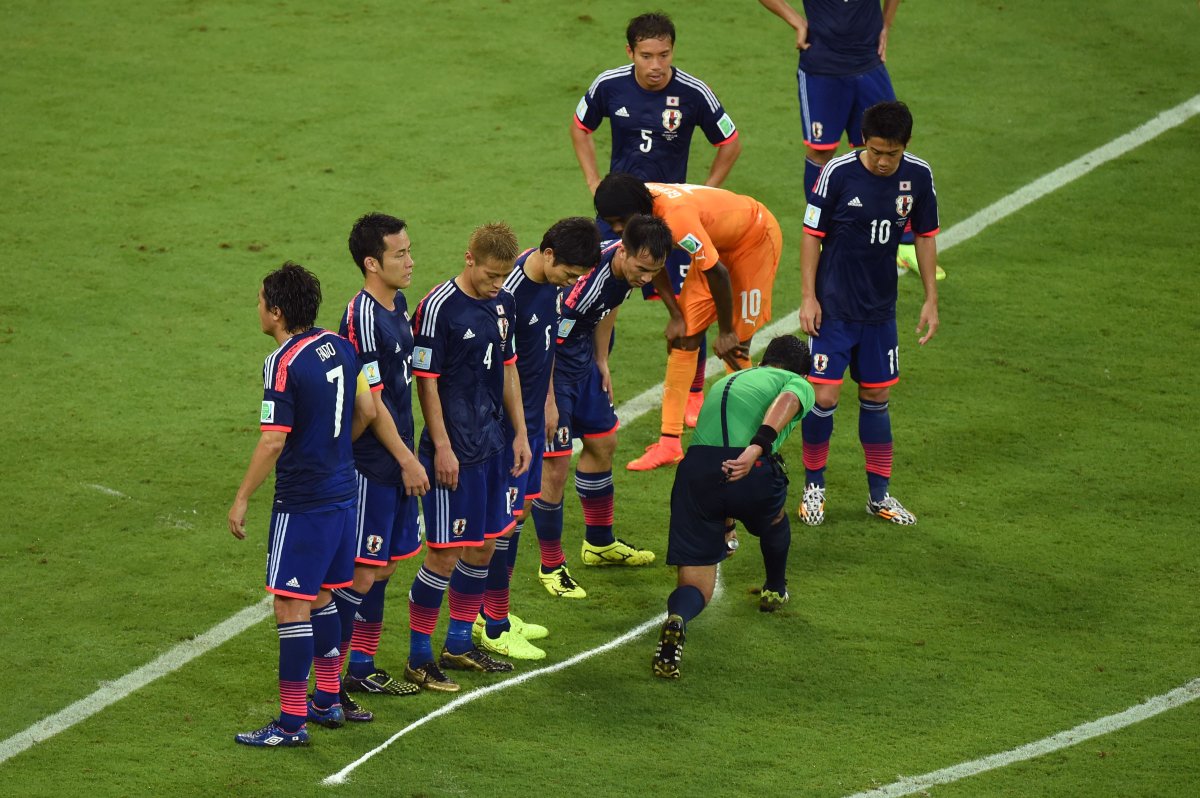When you’re part of a human wall standing between a free kicker and your goal, every centimetre counts.

For the first time, World Cup referees will be able to draw a temporary, visible line demarcating the 9.15-metre distance between a defensive wall and a free kicker. It’s meant to deter cheating, mistakes, complaints and yellow cards – and, ideally, speed up play.
“The spray keeps it 9 metres away and holds it to an actual line, so you see it for what it is,” says Carmine Isacco, head soccer coach of both the men’s and women’s teams at York University.
Isacco says the closer you are, the better the chance the ball will hit the defensive wall, and according to Isacco, even inches make a difference as far as angles are concerned.
The spray being used, 915 fairplay, is a water-based substance that creates a temporary visual marker for players and referees.
The spray, which looks like shaving cream, evaporates from the pitch within a minute and is supposed to increase play time by making the defensive wall line visible to everyone. The visibility of the line discourages players from crossing it, minimizing the number of complaints by players and yellow cards handed out by referees.
Pablo Silva is the product’s creator. An Argentine sports journalist turned entrepreneur, Silva thought up the vanishing spray while playing in an amateur football match, according to Reuters.
Silva says that in the 88th minute of a 90-minute game, his team was down by one goal when the opposition team made an illegitimate move and proceeded past the imaginary defensive wall line during his own free kick. Silva says the referee did nothing to stop the opposing team, leaving Silva frustrated.
Former Graceland University soccer player Brandon Beresford says everyone has cheated before by encroaching past the defensive wall line during a free kick.
“People try to move really slowly, in inches, so they can get closer and closer,” he said. “It’s not some big movement unless the free kick is really far away.”
Beresford says he doesn’t think that inching forward is a big deal, but he says it puts the kicker off a bit.
“If they’re a good free kicker then they’re not going to be worried about it. It’s about how the free kicker feels.”
Silva started working on the spray in 2000 and by 2008 it was officially adopted by the Argentina Football Association. The vanishing spray was added to other leagues when it was approved by the International Football Association on March 3, 2012.
It was tried out during the 2013 FIFA Club World Cup in Marrakech, Morocco. Eighty-four per cent of FIFA referees said they considered it helpful, and the spray was approved for this year’s World Cup in Brazil.
Each can sells for $17.50 to $19.95 online. A specialized holster will set you back $22-$26.
Along with the addition of vanishing spray is new goal-line technology, which relies on 14 cameras that detect whether or not the ball crosses the goal line. This technology, as well as a magnetic field sensor which registers the ball’s location throughout the game, are supposed to reduce human error when determining goals.
READ MORE: How World Cup referees are using goal-line technology
The distance between the sideline and the goal line can often make it impossible for a referee to get behind the line fast enough to see if a ball crosses the goal line.
FIFA is “trying to limit the subjectivity” where referees can make a mistake, Isacco said.
“It’s important to get it right.”




Comments